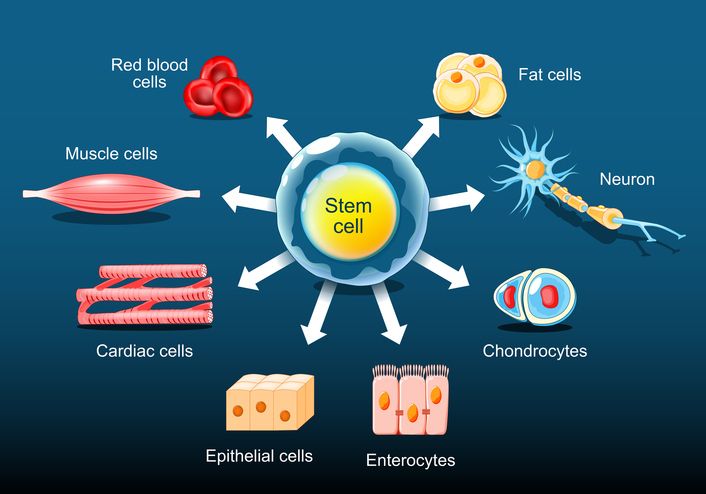
Author: Natalie Ng|Updated: 6 June 2025
Losing body fat isn’t just about what’s on your plate, but also about when you eat. The best time to eat for fat burn might be earlier in the day or spaced out in a way that gives your body time to reset between meals. These changes may sound small, but they can make a big difference in how your body uses energy. Several eating patterns focus more on timing than calories. Things like intermittent fasting, eating dinner earlier, or just having meals at regular times can all influence how your body stores fat, manages hunger, and keeps your glucose levels steady. Shifting your eating habits like this can also help with insulin resistance and support weight loss over time. If you're trying to lose weight or avoid weight gain, adjusting your meal timing might be more effective than you think. It doesn’t mean giving up your favorite foods—just changing when you eat them. Below, you’ll find six simple schedules that can help burn fat more efficiently. Keep reading to see which one fits your routine best.

Fat Burning Eating Schedule 1: 16/8 Intermittent Fasting for Better Fat Burn
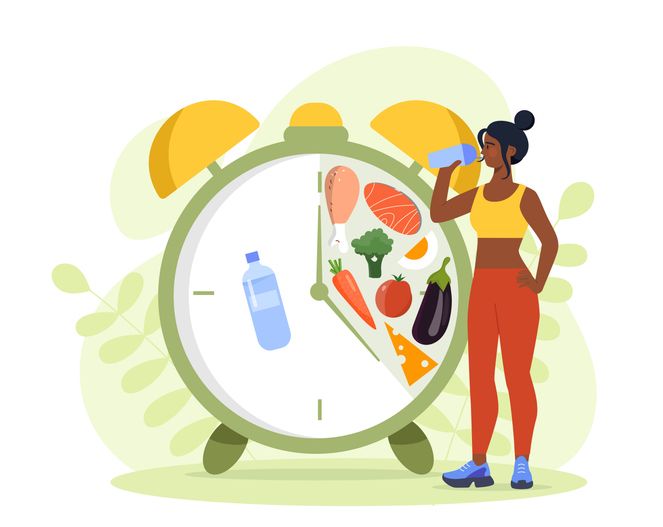
Meal timing that supports fat burning and weight loss
The 16/8 intermittent fasting method limits your eating to 8 hours and stretches your fasting period to 16. This approach helps promote weight loss and improve metabolic health without extreme calorie restriction.
During the fasting period, you only consume zero-calorie drinks like:
• Water
• Black coffee
• Unsweetened tea
A common eating window is from 12 PM to 8 PM. You eat lunch around noon and finish eating dinner by evening, then fast until the next day’s first meal.
This eating pattern may help:
• Reduce body fat and support weight management
• Lower insulin concentrations and improve insulin resistance
• Control blood glucose and prevent increased postprandial glucose
• Avoid weight gain linked to eating late
• Support appetite hormones that affect hunger and satiety
• Improve energy expenditure throughout the day
Best for early eaters and structured routines
This method fits well into regular schedules, especially for:
• People who prefer skipping breakfast
• Those who eat lunch and dinner at regular times
• Anyone trying to avoid late night eating
• Busy individuals who want a simple, regular eating pattern
By limiting the eating window and avoiding late eating, this schedule can also support better sleep duration, reduce energy intake, and make it easier to promote fat burning without counting every calorie.

Fat Burning Eating Schedule 2: Early Time-Restricted Feeding (eTRF) to Burn Fat Earlier in the Day

Eating earlier in the day to improve fat burning
Early time-restricted feeding (eTRF) focuses your meals into a 6–8 hour window earlier in the day—typically between 7 AM and 3 PM. You stop eating by mid-afternoon and fast until the next morning. This eating pattern supports fat burning, improves insulin sensitivity, and reduces late night eating, which may otherwise lead to weight gain or increased blood glucose levels.
eTRF aligns closely with your body’s natural rhythm. Your metabolism is most active during daylight hours, making it easier to burn fat and manage your body weight more efficiently. Instead of spreading meals late into the evening, this schedule encourages early lunch eaters and early dinner timing to promote weight loss.
Key features of the eTRF schedule
• Start eating within 1–2 hours after waking
• Finish your final meal before 3 PM
• Avoid eating dinner late or snacking at night
• Eat breakfast and lunch as your main meals
• Fast for 16–18 hours after your last meal
• Stay hydrated during fasting hours
Benefits linked to earlier eating patterns
• Increased fat oxidation during and after fasting
• Reduced appetite hormones in the evening
• Improved blood glucose levels and insulin resistance
• Fewer cravings caused by late night eating
• Enhanced resting energy expenditure in the morning hours
• Better sleep quality due to improved digestive system rhythm
This approach may benefit those trying to lose weight without relying on low calorie diets. It’s especially helpful for early eaters, people with morning physical activity routines, or anyone who wants to improve metabolic health through better food timing.
Read More
Book Now to Experience
S6 Body Sculpting Treatment
1 Minute Self-Registration
Date should not be before minimal date

Fat Burning Eating Schedule 3: Traditional Three-Meal Timing to Support Fat Burning
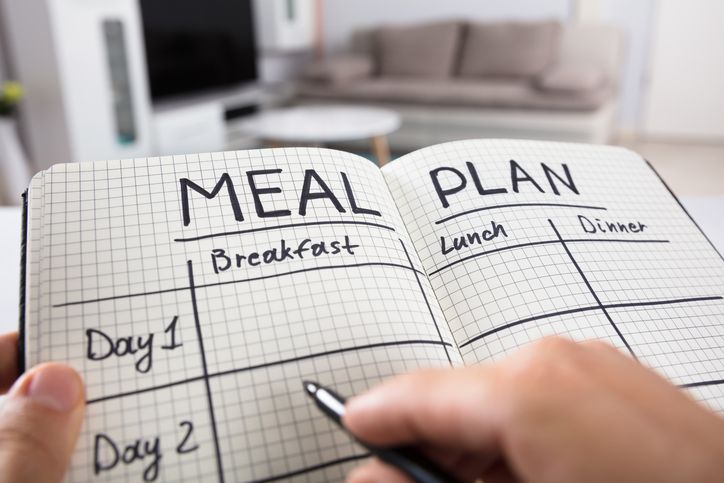
Structured meal timing that helps regulate body fat and blood sugar
A regular three-meal schedule can support fat burning when meals are timed around your body’s natural energy patterns. Instead of focusing on fasting, this approach spaces out breakfast, lunch, and dinner in a way that avoids late night eating, supports glucose tolerance, and keeps insulin concentrations more stable throughout the day.
You’ll aim to eat roughly every 4–5 hours, which helps reduce snacking and prevent sharp blood sugar spikes. This spacing also gives your body time to fully process each meal before the next one, which supports fat oxidation and weight loss goals.
Suggested meal times for better metabolic rhythm
• Eat breakfast between 7–8 AM to fuel your day early and prevent overeating later. A protein-rich first meal can help regulate appetite hormones and reduce body fat over time.
• Eat lunch around 12–1 PM, when your energy may naturally dip. This timing can help improve blood glucose balance and prevent the hunger that leads to poor food choices.
• Eat dinner by 6–7 PM and avoid eating dinner too close to bedtime. Giving yourself at least 3 hours before sleep supports digestion and nighttime fat burning.
Why this approach works for weight management
• Encourages regular food timing and balanced calorie intake
• Helps stabilize glucose levels between meals
• Supports reduced appetite and better control over energy intake
• Avoids increased risk linked to late eating and irregular snacking
• Reduces chances of weight gain tied to disrupted meal patterns

Fat Burning Eating Schedule 4: 5:2 Eating Pattern for Flexible Fat Loss

Alternating calorie intake to support fat burning and metabolic health
The 5:2 eating pattern allows flexibility by alternating between regular eating days and reduced-calorie days. You eat normally five days a week and limit your intake to 500–600 calories on two non-consecutive days. This routine creates a calorie deficit without daily restrictions, making it easier to promote weight loss and reduce body fat without drastically changing your eating habits.
Instead of following strict low calorie diets every day, this plan gives your body regular breaks from energy intake while maintaining muscle mass and managing blood glucose levels. It's a simple way to improve insulin resistance and support overall metabolic health.
Typical 5:2 weekly schedule
Regular Eating Days (5 days):
• Eat breakfast, lunch, and dinner as usual
• Focus on whole foods and balanced meals
• Maintain regular meal timing and avoid late eating
Fasting Days (2 days):
• Limit calorie intake to 500–600 calories total
• Spread meals into two light portions (e.g., late breakfast and early dinner)
• Drink plenty of water, unsweetened tea, or black coffee
• Prioritize protein and fiber-rich foods to stay full longer
Health benefits of reduced-calorie eating days
• Supports fat burning by reducing overall energy intake
• Helps regulate appetite hormones and promote weight loss
• May reduce inflammation and improve glucose tolerance
• Encourages healthier eating habits even on regular days
• Avoids weight gain while preserving lean body mass
Book Now to Experience
S6 Body Sculpting Treatment
1 Minute Self-Registration
Date should not be before minimal date

Fat Burning Eating Schedule 5: Strategic Meal Spacing to Improve Metabolic Health

Spacing meals to support fat burning and better glucose control
Spacing your meals throughout the day can help your body burn fat more efficiently. Allowing 4–6 hours between meals gives your digestive system time to process food fully, helping you tap into fat stores between meals instead of constantly storing excess energy. This approach works with your body’s natural hunger cycles and supports better glucose tolerance and insulin sensitivity.
Instead of grazing or eating too frequently, spacing meals encourages more stable blood sugar, fewer cravings, and improved metabolic health—all without drastically reducing your calorie intake.
Optimal gaps between meals for fat burn
• Eat breakfast within 1 hour of waking to support resting energy expenditure and reduce appetite hormones
• Wait 4–5 hours before eating lunch to give your body time to use stored energy
• Eat dinner at least 3 hours before bedtime to support overnight fat burning and improve sleep duration
Spacing meals this way helps reduce the likelihood of late night eating, which research suggests is linked to higher risk of weight gain and decreased glucose tolerance.
Benefits of structured meal gaps
• Helps stabilize blood glucose and insulin concentrations
• Reduces cravings and overeating between meals
• Improves fat oxidation during fasting periods between meals
• Supports weight management without extreme restrictions

Fat Burning Eating Schedule 6: Warrior Diet (20/4 Method) to Maximize Fat Burning in a Short Window
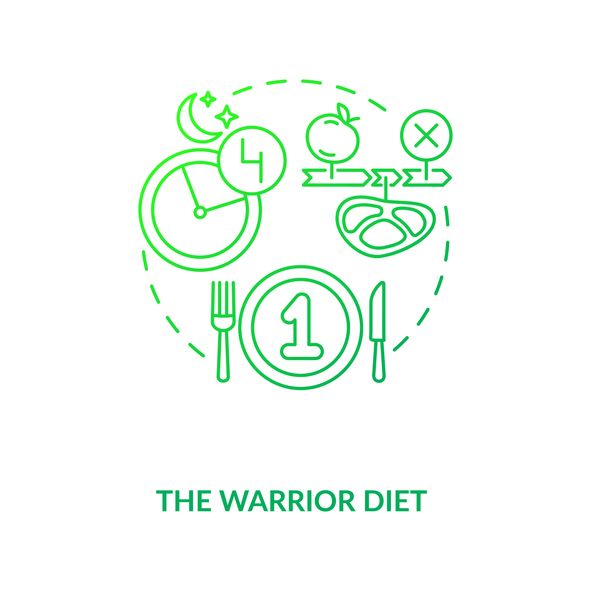
Extended fasting for deeper fat burning and improved hormone balance
The Warrior Diet uses a 20/4 fasting-to-eating schedule. You fast for 20 hours and eat all your daily calories within a 4-hour window, usually in the evening. During the fasting period, you only consume water, black coffee, or unsweetened tea. This longer fast allows your body to use fat as its primary fuel source while also supporting glucose control and reducing insulin concentrations.
This eating pattern may trigger multiple metabolic changes, including better carbohydrate oxidation and more efficient use of body fat for energy. It also helps regulate appetite hormones and may improve energy intake control in the evening.
Typical Warrior Diet routine
• Fasting period (20 hours):
- No solid food
- Drink only zero-calorie beverages
- Light activity is encouraged to support energy use
• Eating window (4 hours, usually in the evening):
- Eat one large, nutrient-dense meal
- Focus on protein, vegetables, healthy fats, and complex carbs
- Avoid overeating or eating late into the night
Metabolic and lifestyle benefits
• Promotes fat oxidation during long fasting hours
• Helps improve insulin sensitivity and blood glucose control
• Reduces total calorie intake naturally
• Encourages more mindful, less frequent eating
• May support better appetite control in those prone to snacking
Book Now to Experience
S6 Body Sculpting Treatment
1 Minute Self-Registration
Date should not be before minimal date

Impact of Sleep and Meal Timing on Fat Burning

Why late night eating affects sleep and fat metabolism
Your eating schedule doesn’t just affect weight loss—it also influences your sleep quality, energy use, and how efficiently your body burns fat. Research suggests that eating dinner too late or snacking at night may lead to decreased glucose tolerance, disrupted insulin concentrations, and weight gain over time.
Your body performs many restorative functions during sleep, including hormone regulation and fat oxidation. If you're still digesting food late into the night, especially after a high fat diet or heavy dinner, it may affect sleep duration and reduce the benefits of overnight fasting.
How better sleep supports fat burning:
• Finishing meals at least 3 hours before bedtime improves digestion and supports overnight energy expenditure
• Quality sleep helps regulate appetite hormones, making it easier to avoid excess calorie intake the next day
• Skipping late eating may reduce insulin resistance and help burn more body fat
• Longer fasting periods after early dinner timing support improved metabolic health
Eating earlier in the evening—and getting enough sleep—can work together to promote weight loss and prevent weight gain, especially if you're also following structured meal timing or time restricted eating patterns.

Importance of Eating Patterns in Long-Term Weight Management

How eating routines affect body weight and metabolic health
The way you plan your meals over time plays a bigger role in fat burning and weight control than just calorie intake alone. While the quality of food is important, your eating habits—especially when and how often you eat—also shape your body’s response to food.
Irregular patterns like late night eating, skipping breakfast, or eating dinner too close to bedtime can disrupt your metabolism and lead to increased insulin resistance or blood glucose spikes. These habits may gradually lead to weight gain, even without overeating.
Why regular eating habits support better results:
• Eating dinner earlier supports glucose tolerance and improves sleep quality
• Skipping breakfast may lead to increased energy intake and body fat later in the day
• Structured meal timing helps reduce the risk of chronic diseases linked to poor insulin regulation
• Early eaters tend to show better resting energy expenditure than late lunch eaters or those who delay the first meal too long
Making small changes in your food timing and avoiding long gaps or chaotic schedules can support sustainable weight management and promote long-term fat burning.
Book Now to Experience
S6 Body Sculpting Treatment
1 Minute Self-Registration
Date should not be before minimal date

What to Prioritize During Eating Windows to Support Fat Burn
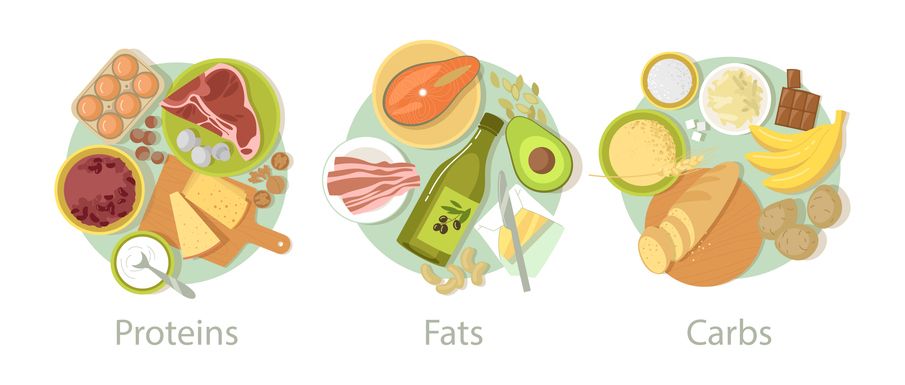
Food quality still affects results—here’s what to focus on
Even with an ideal eating schedule, the foods you choose inside your eating window affect how your body processes energy and stores fat. Eating habits that focus only on timing without considering food quality may limit your progress.
To avoid increased postprandial glucose, hunger spikes, or reduced metabolic health, choose nutrient-rich foods that support appetite control and reduce insulin concentrations.
Foods that work well with fat-burning eating schedules:
• Protein-rich choices like hard boiled eggs, tofu, fish, or a low sugar protein shake
• Complex carbohydrates from sweet potatoes, oats, and legumes to support blood glucose stability
• Healthy fats like olive oil, nuts, and avocado to support energy balance
• Fiber-rich vegetables to support digestion and reduce total calorie intake
• Water and herbal teas to help with hydration and appetite between meals
Pairing these food choices with your chosen eating pattern helps reduce the risk of weight gain and improves overall health outcomes. It also supports balanced glucose levels and makes it easier to stick with your schedule without relying on extreme low calorie diets.

Pairing Fat-Burning Meal Timing with Targeted Body Sculpting
Why some areas hold on to fat—even with the right eating pattern
Eating at the best time for fat burn can support long-term weight loss, improve metabolic health, and reduce overall body fat. But even with smart eating habits like intermittent fasting or early time-restricted feeding, certain areas—like the belly, thighs, and back—often remain resistant to change. That’s where targeted treatments like S6 Body Sculpting come in.
Meal timing helps regulate insulin resistance, glucose levels, and energy intake. But it won’t always break down stubborn fat deposits shaped by genetics, lifestyle, or limited physical activity. If you’re trying to lose weight but still struggle with localized fat, combining your eating pattern with a non-invasive treatment can make a noticeable difference.
How S6 Body Sculpting Treatment works
S6 Body Sculpting uses a low-energy bio-laser to penetrate subcutaneous fat layers in specific areas of the body. It breaks down fat cells by triggering the release of fatty acids, which are then removed through natural lymphatic drainage. The treatment also uses vacuum suction technology to speed up metabolism in the treated area, while stimulating collagen to firm the skin.
Each session includes:
• Body shape analysis and customized fat reduction plan
• Application of bio-laser to targeted areas like the waist, thighs, calves, or arms
• Vacuum-assisted massage to support fat release and lymphatic flow
Benefits of combining smart eating with S6
When paired with a regular eating schedule, S6 Body Sculpting enhances fat-burning results by targeting specific areas that are harder to reduce through diet alone.
Key advantages include:
• Targets fat in areas commonly resistant to weight loss (belly, thighs, back, arms)
• Non-surgical and non-invasive—no injections, no downtime
• Helps avoid sagging skin by tightening treated areas through collagen stimulation
• Supports metabolism and lymphatic drainage post-treatment
• Safe for various body types and ideal for those with limited time for exercise
Whether you follow intermittent fasting, eat dinner earlier, or space meals for better energy expenditure, this treatment works alongside your eating habits to help you burn fat more efficiently—and shape the areas you care about most.
Book S6 today to experience visible results and take your fat-burning progress further.
New Beauty's S6 Body Sculpting TreatmentBook Now to Experience
S6 Body Sculpting Treatment
1 Minute Self-Registration
Date should not be before minimal date
FAQ
1. What is the best time to eat breakfast for fat burn?
Eating breakfast within one hour of waking can help support resting energy expenditure and regulate appetite hormones. A high-protein first meal eaten during the morning hours may reduce body fat accumulation by keeping blood glucose stable and lowering the chance of late morning snacking. Skipping breakfast too often may lead to increased hunger later in the day and higher energy intake overall.
2. Can eating dinner earlier help promote weight loss?
Yes, eating dinner earlier—at least 3 hours before bedtime—can improve glucose tolerance, support better sleep quality, and reduce the effects of late night eating, which is linked to weight gain and decreased metabolic health. Early dinner timing also allows for a longer overnight fasting window, which enhances fat oxidation and may help those trying to lose weight.
3. Does spacing meals help with weight management?
Spacing meals every 4 to 6 hours helps control appetite, stabilize blood sugar, and promote fat burning between meals. It may also reduce cravings and prevent increased postprandial glucose spikes that can occur with frequent eating. Strategic meal gaps support your digestive system and can help improve long-term weight management results.
4. Is it possible to gain weight even with intermittent fasting?
Yes, weight gain can still happen with intermittent fasting if your overall calorie intake exceeds what your body burns. Overeating during the eating window, eating high fat diet meals, or consuming too many refined carbs may slow down fat burning. Intermittent fasting helps regulate insulin concentrations and appetite hormones, but food quality and portion size still matter.
5. Can I combine S6 Body Sculpting with a Mediterranean diet?
Yes, combining S6 Body Sculpting Treatment with a Mediterranean diet can support better fat loss results. This diet emphasizes whole foods, healthy fats, lean proteins, and fiber—helping control blood glucose, reduce inflammation, and support metabolic health. When paired with regular meal timing and body contouring treatments, it may enhance your ability to burn fat and avoid weight gain.
Recommended Articles
COPYRIGHT© NEW BEAUTY MANAGEMENT LIMITED 2025. ALL RIGHT RESERVED.


